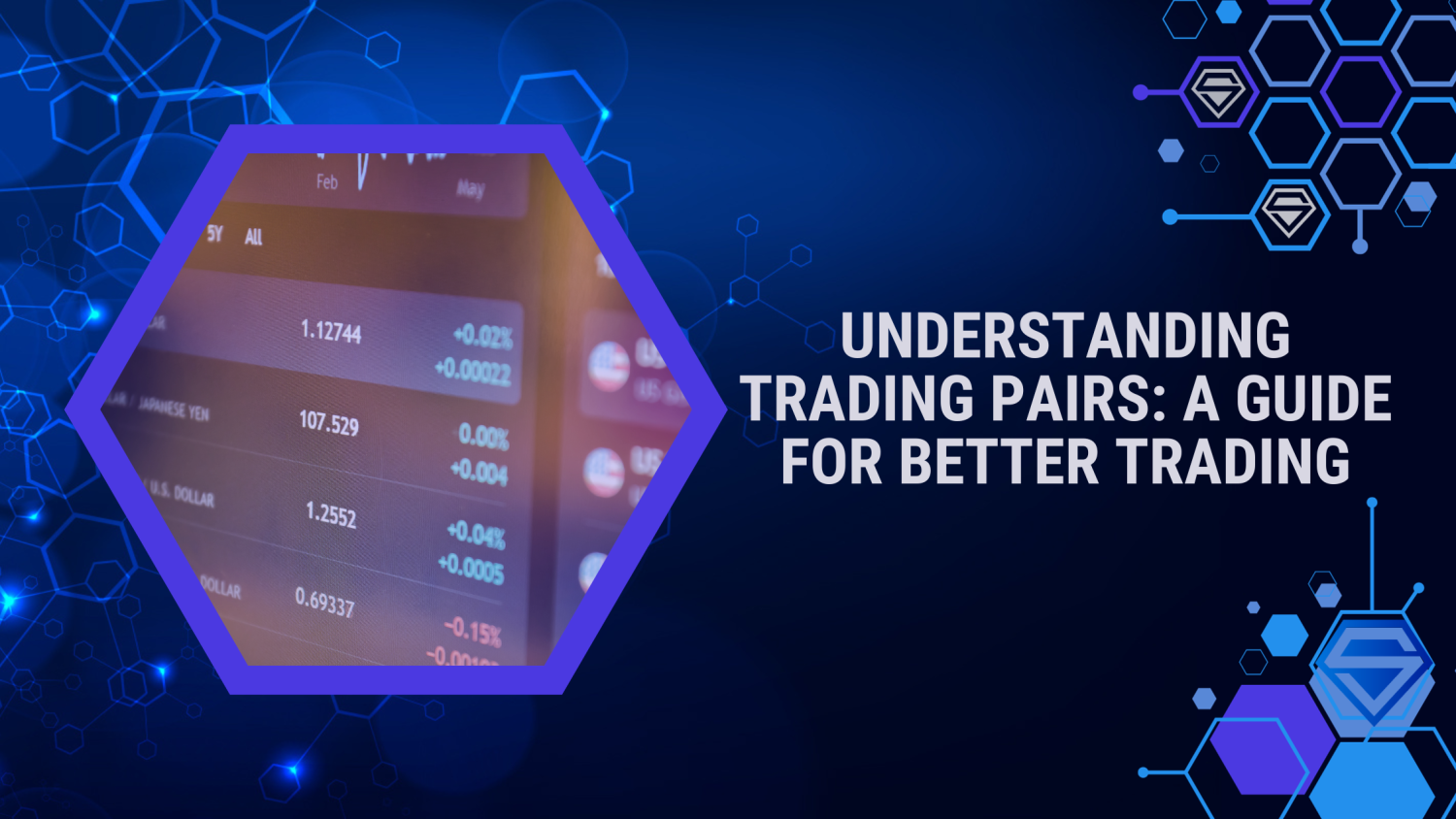
12. October, 2023
What are Trading Pairs: A Guide for Better Trading
What Are Trading Pairs?
Okay, let’s start from the very beginning. Imagine you’re planning to exchange your hard-earned dollars for digital coins or foreign currencies. You can’t just walk into the market and say, “Give me some cryptocurrency, please!” That’s where trading pairs come into play.
In the most basic terms, a trading pair is a combination of two assets that you can trade against each other. These assets can be any cryptocurrency, fiat currency, or even precious metals. The value of one asset is compared to the value of the other. Think of it as a seesaw, where one side goes up, the other goes down.
Why Trading Pairs Matter
Now, let’s address your pain points as a trader. You may wonder, “Why should I care about trading pairs?”
- Diversification: Trading pairs enable you to diversify your investments. Instead of putting all your eggs in one basket, you can spread your risk across multiple assets. This is crucial in the unpredictable world of trading.
- Market Dynamics: Understanding how different assets relate to each other is like having a map in an unfamiliar territory. It helps you navigate through market fluctuations and make informed decisions.
- Profit Opportunities: Trading pairs open the door to countless profit opportunities. You can bet on an asset’s price going up (going long) or down (going short) in comparison to another asset. This flexibility can potentially amplify your gains.
Cryptocurrency Trading Pairs
These are just a few examples of the many trading pairs available in the cryptocurrency and forex markets.
Bitcoin/Ethereum (BTC/ETH)
If you’re stepping into the world of cryptocurrencies, this is your classic starter pack. Bitcoin, often referred to as digital gold, is paired with Ethereum, the pioneer of smart contracts. This duo represents the old and the new, the steady and the innovative, and offers a spectrum of trading opportunities.
Ripple/Litecoin (XRP/LTC)
Ripple and Litecoin are like the dynamic duo of digital silver. While Ripple (XRP) aims to revolutionize cross-border payments, Litecoin (LTC) offers faster transaction confirmation times. Trading this pair can be like riding the waves of innovation and practicality.
Bitcoin Cash/Bitcoin (BCH/BTC)
Bitcoin Cash (BCH) emerged from the Bitcoin (BTC) family tree, aiming to offer faster and cheaper transactions. This pair allows traders to speculate on the growth of Bitcoin Cash against the original Bitcoin, reflecting the ongoing debate between digital gold and digital cash.
USD/JPY (US Dollar/Japanese Yen)
This pair, often referred to as the “Gopher,” reflects the strength of the US Dollar against the Japanese Yen. Traders often monitor this pair as it’s sensitive to economic data, geopolitical events, and market sentiment.
EUR/GBP (Euro/British Pound)
The “Chunnel” is a fascinating pair that reflects the dynamic between the Euro and the British Pound. It’s influenced by events in the European Union and the United Kingdom, making it a key indicator of Brexit-related news and developments.
Understanding Price Movements
Now, let’s tackle another important aspect – price movements. In trading, prices fluctuate all the time. Understanding these movements is key to making profitable decisions. Price movements are depicted in two ways: a bullish or bearish market.
- Bullish Market: When the base currency’s value is rising compared to the quote currency, it’s a bullish market. Think of it as the base currency getting stronger.
- Bearish Market: Conversely, a bearish market occurs when the base currency’s value is falling compared to the quoted currency. Here, the base currency weakens.
Base and Quote Currency
In any trading pair, there are two currencies involved: the base currency and the quote currency. The base currency is the one you’re looking to buy or sell, while the quote currency is the one you’re using to make the purchase. Think of it as a simple exchange process – you’re swapping your base currency for the quote currency at a specific rate.
Example: USD/EUR
Let’s say you’re trading the USD/EUR pair. In this case, the USD is your base currency, and the EUR is your quote currency. The pair’s value represents the price of 1 USD in terms of EUR. If the USD/EUR pair is at 0.85, it means 1 US dollar is worth 0.85 Euros.
Trading Pairs Strategies
Here, we’ll explore some tried-and-true strategies that can help you make the most out of your trading pairs.
1. Correlation Analysis: Unlocking the Synergy
Before you begin trading, it’s crucial to understand the dynamic between the two assets in your chosen pair. This understanding is what correlation analysis is all about. Consider it as the compass guiding your trading journey.
- Positive Correlation: If two assets in a pair often move in the same direction, they’re positively correlated. When you notice this, it might be an excellent opportunity to go long, betting that both assets will rise together. For example, if Bitcoin and Ethereum tend to rise and fall together, it’s a positive correlation you can leverage.
- Negative Correlation: Conversely, if the assets in a pair usually move in opposite directions, you’re looking at a negative correlation. This scenario could be a prime candidate for going short, speculating that one asset will outperform the other. An example could be trading Gold/Silver – when one rises, the other might fall.
2. Technical Analysis: Harnessing the Power of Data
Technical analysis is like your trading radar – it helps you anticipate potential price movements by scrutinizing historical price data and using various indicators.
- Moving Averages: These indicators smooth out price data, making it easier to spot trends. Traders often use them to identify potential entry and exit points. For example, a moving average crossover strategy might involve buying when a short-term moving average crosses above a long-term moving average.
- Relative Strength Index (RSI): RSI measures the speed and change of price movements. It helps traders identify overbought or oversold conditions in the market. When the RSI indicates that an asset is overbought, it may be time to consider selling, and vice versa.
3. Fundamental Analysis: The News and Events Compass
In the world of trading, events, and news can have a profound impact on the values of assets. Fundamental analysis involves staying informed about these external factors and using that knowledge to guide your trading decisions.
- Economic Reports: Keep a close eye on economic reports like GDP, employment data, and inflation figures. These reports can provide valuable insights into a country’s economic health, influencing the strength of its currency.
- Government Policies: Government policies, such as interest rate decisions and fiscal stimulus packages, can significantly affect an asset’s value. For example, if a central bank raises interest rates, the currency of that country may strengthen.
- Market Sentiment: Sometimes, the market moves not just on cold, hard data but on sentiment. News and events that capture the imagination of traders can drive significant price movements. Stay tuned to the buzz in the financial world to react promptly.
Remember, there is no one-size-fits-all strategy in trading pairs. The key to success is understanding that these strategies are like tools in your trading toolbox. Depending on the situation and the assets you’re trading, you may need to use one tool more than others
Conclusion
Trading pairs are the essential building blocks of trading in both the cryptocurrency and forex markets. They allow you to compare and trade assets efficiently, diversify your investments, and potentially increase your profits. Understanding the dynamics of trading pairs can be your secret weapon for navigating the volatile trading world.
So, if you’re new to trading or looking to up your game, remember that it all begins with the basics. Trading pairs are your stepping stones to success. Keep things simple, stay informed, and always be ready to adapt to the ever-changing market.


